Cricket invasion hits parts of East and Central Texas By Steve Byrns, AgriLife Extension
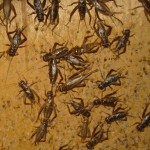 The current cricket invasion many are experiencing in parts of East and Central Texas isn’t particularly unusual, but the timing is, said a Texas AgriLife Extension Service entomologist.
The current cricket invasion many are experiencing in parts of East and Central Texas isn’t particularly unusual, but the timing is, said a Texas AgriLife Extension Service entomologist.
Dr. Michael Merchant, AgriLife Extension urban entomologist at Dallas, said he’s had a number of reports from Central and East Texas folks concerned with the high number of crickets they’re seeing this year.
“I attribute this to early warm temperatures and recent rains that serve as a trigger for cricket flights,” Merchant said. “This is the earliest cricket infestation that I can recall though. We usually have cricket swarms following our late summer and fall rains.”
Merchant said cricket outbreaks are among the most predictable pest occurrences in Texas. Most of the invaders are black field crickets belonging to the Gryllus assimilis complex.
“We usually see this phenomenon in August and September when our typical summer drought is broken by rainfall and cooler temperatures,” Merchant said. “That’s happened earlier this year, leading to the high numbers we are seeing now.”
Merchant said field crickets are outside insects which don’t breed or live indoors, so the chance of damage is minimal.
“During severe outbreaks, like some are having now, they can become a nuisance around homes and businesses due to the sheer numbers. They swarm up walls, over sidewalks and eventually die, causing an unsightly mess and foul odors,” he said.
Merchant said home and business owners can greatly reduce the onslaught by turning off outdoor lights that attract the insects. He said bright outside lighting is the leading cause of high cricket concentrations.
“If it’s practical, just turn off your outside lights as early in the evening as possible or replace the bulbs with low-pressure sodium vapor lamps or yellow incandescent ‘bug lights’ which aren’t as attractive to crickets as brighter light sources.”
Merchant said it’s also important to seal all entry points to your home, especially those near bright lights. He recommends using steel or brass wool as a temporary barrier, because it’s easily stuffed into weep holes, cracks and other entry points, but doesn’t hinder needed air flow.
“Insecticides should only be considered as a last resort due to safety and environmental concerns, and even then only as a partial solution to the problem,” Merchant said. “Insecticides should be used with reduced outdoor lighting for best results. Crickets drawn to bright lights will continue to cause problems no matter how much insecticide is used.
“The good news is the heaviest mating flights, which is what these infestations are, only last a week or two. If this naturally occurring invasion gets on folks’ nerves too bad, I recommend they catch a few for bait and go fishing!”
For more information on crickets and other insects go to http://citybugs.tamu.edu
What’s really killing Texas trees? By: Robert Burns, AgriLife Extension

Hypoxylon is a fungus that is usually considered a weak pathogen — not aggressive enough to take over healthy, unstressed trees, according to a Texas AgriLife Extension Service forestry specialist. Once the signs of the fungus infection are obvious, as here, the tree is already dead.
Although drought is often the cause, trees can die for other reasons besides lack of soil moisture, said Dr. Eric Taylor, Texas AgriLife Extension Service forestry specialist, Overton.
“Drought is the primary contributor to tree kill, but it may not be exactly the way you might be thinking,” Taylor said. “You may find this hard to believe, but relatively few trees likely died directly from dehydration in 2011. Instead, the 2011 drought severely weakened mature trees, making them susceptible to opportunistic pathogens like hypoxylon canker and insects like pine bark engraver beetles.”
He said that in most instances, the trees that died in 2011 were already stressed from a number of pre-existing environmental factors such as overcrowding, growing on the wrong site, age, soil compaction, trenching or inappropriate use of herbicides. If not for these factors, a large proportion of the trees that died might have recovered from the drought.
“This is an important concept to remember because our best defense against drought is to promote a tree’s health and vigor through proper care and management,” Taylor said.
This is not to play down the importance of water to tree health, he said. Water, particularly soil moisture, is critical for all a tree’s physiological processes. Trees require water to make and transport food, take in and release carbon dioxide, conduct biochemical reactions, build tissue and more.
“You name it, the tree needs water to do it,” Taylor said.
Though moisture stress may be the trigger,many trees likely died from insect damage, invasion of fungi and other diseases, and even heat stroke, according to Taylor.
“Much of the recent tree deaths and general decline might also be attributed to the extreme and prolonged heat of 2011,” he said. “Extreme temperatures, not only during the day but also in the early evenings and night, have negative impacts to tree physiological processes.”
Taylor said although it is the lack of water that’s at the root of tree death by heat stroke, there’s more to it than the tree being thirsty. As do humans, trees sweat to cool themselves off. Only with trees, the process is called “transpiration,” and it’s water evaporating primarily from leaves that dissipates heat.
Inadequate soil moisture coupled with hot air temperatures means a tree’s ability to transpire is limited.
“As a result, the cells in leaves and small branches can ‘cook’ to death,” Taylor said.
This “cooking” results in cell and protein breakdown, the generation and/or buildup of toxins, lesions and eventually death of the tree, he said.
As for tree deaths from macro fungi on hardwoods such as hypoxylon canker, it’s stress brought on by drought and heat that creates opportunity for the disease, not the direct effects of moisture shortage, Taylor said. Hypoxylon is a white-rot fungus that is usually considered a weak pathogen — not aggressive enough to take over healthy trees.
“It is only of consequence when the trees are under severe stress and wood moisture drops significantly,” he said. “Often, the first symptom that may be observed is the dying back or thinning of the crown.”
As the fungus develops underneath the bark, it causes the bark to pop loose and slough off, exposing a mat of grey, tan, olive green or reddish-brown powdery spores,” he said.
“By the time the spores become visible, the tree is dead,” Taylor said.
For more information about the identification and prevention of hypoxylon canker, go to http://txforestservice.tamu.edu , he said.
Another odd sign occurring this year is the dropping of seemingly healthy, green leaves, according to Taylor. One explanation for green leaf dropping is that the tree lost part of its root system during the 2011 drought.
“When spring came, there was enough food reserves for the trees to leaf out, but the root system was no longer sufficient to provide enough water to all of the leaves that developed,” Taylor said. “Now the trees are compensating by dropping some of the leaves in order to provide adequate moisture to the residual leaves.”
But don’t start your chainsaw yet, he said. If this is the first year that a tree’s dropped leaves, it may eventually recover, according to Taylor.
If the drought continues or intensifies, homeowners can reduce tree stress by paying attention to over-crowding, proper pruning, minimizing damage to the stem and roots, and proper watering.
For existing landscapes, proper watering during a drought is the best way to reduce water stress.
“A rule of thumb is to begin supplemental watering if significant rainfall has not occurred in the past seven to 10 days,” he said. “Begin sooner if it’s extremely hot and humidity is low.”
Taylor recommended using a soaker hose or by trickle or drip irrigation, and water just outside the drip line of the tree’s crown. (The drip line is the area on the ground directly under the farthest-reaching branches.)
“It is not necessary to encircle the entire tree, especially if a very large tree” he said. “A good watering on half or one quarter of the root system can be very beneficial. Do not concentrate the water at the base of the tree. Doing so can lead to root diseases.”
The water should soak into the soil without run off. If the water runs off or puddles, reduce the flow rate. Water until the moisture has soaked in to the soil to a depth of at least 8 to 10 inches.
The best time to water is during the early evening and at night, Taylor said. This is the time when trees normally catch up and replenish the water they loose during daytime activities like photosynthesis.
During the drought, plan on watering trees once a week. Be forewarned though. Large trees drink from a big bucket, Taylor said.
There’s more than just water involved in maintaining healthy trees. In August, Taylor is conducting a four-part course on woodland management with urban landowners in mind. See http://today.agrilife.org/2012/07/10/private-woodlands for more information.
Proactive Action Plans Discourage Bed Bug Problems By: Jodi Schmitz, IPM Institute of North America
Bed bugs are on the radar at many school districts. More than 1,000 people registered for US Environmental Protection Agency (EPA) Region 2’s June webinar, “Bed Bugs go to School.” The presentation covered basic facts about bed bugs and tips for keeping them from becoming a problem in schools.
Bed bugs remain a growing problem nationally. However, breeding populations of bed bugs have not been reported in schools. Rather, bed bugs are “introductions,” arriving in staff and student belongings including clothing or book bags. Unless a school is a boarding facility, or also serves as a shelter where people are staying overnight, schools do not offer feeding opportunities at night which are critical for establishing bed bug infestations.
Long before a bed bug is found, school districts should create a policy and action plan for responding to a bed bug detection. All staff should be aware of their responsibilities in the event of a confirmed bed bug specimen. A policy and plan can help avoid confusion and overreaction when a bed bug is discovered.
There is no need to close the school or send any students home when a bed bug detection is confirmed. Instead, districts should have a comprehensive procedure in place, which includes:
- Discretely remove the affected student from class so the school nurse can check the student’s clothing and belongings. Remember that bed bugs are very seldom found on the body.
- The nurse or school principal should contact the student’s parents or guardian to inform them of the situation. The student should not be excluded from school activities.
- Send additional bed bug information home with the child, including basic information about bed bugs and how they are controlled.
Schools should educate students, parents, faculty and staff about basic bed bug biology and habits and how to recognize all life stages of bed bugs. Let parents know the school has a bed bug action plan in place and send an awareness flier home to educate them on how to avoid sending bed bugs to school with their children.
Tried and true IPM approaches can discourage all pests, including bed bugs, cockroaches, rodents and ants from setting up shop:
- Inspect rooms regularly. Tools of the IPM trade include a magnifying glass, strong LED flashlight, plastic zip-bags or clear tape for collecting specimens, a probe (like a cut credit card) and tools for removing outlet and light switch covers.
- Encourage staff to reduce clutter by at least half, focusing on anything that hasn’t been used in the last two years.
- Clean and vacuum regularly. For classrooms where bed bugs have been confirmed, vacuum up a small amount of talcum powder to discourage any bed bugs that are inside the vacuum from crawling back out.
- Isolate all student belongings in clear plastic bags or bins, especially if there has been a bed bug detection in a particular classroom.
- Reduce items brought back and forth from home to school. Identify items that can be left at school or at home until the end of the year.
Pesticide treatments are not needed in typical school environments. A dryer can be used to heat belongings to the lethal temperature for bed bugs. For boarding schools, dormitories or other educational facilities where people sleep at night, a variety of heat treatments are very effective including hot boxes to treat infested furnishings, books, etc., whole-room hot air generators and application of steam to potential harborages. Avoid steam treatments to electrical outlets or fixtures.
Bed bug dogs can be effective tools, but can also be expensive and performance can be variable. Given schools are typically not harboring breeding populations of bed bugs, canine inspections have limited value. If used, children should not be in the school while the dog is working to reduce distractions for the dog team.
EPA has developed a collection of additional information on bed bug prevention and management, including tips on hiring pest management professionals, identifying and treating bed bug infestations, and common bed bug myths.
Or follow this link to our Bed Bug Management Plan http://www.extension.org/pages/61823/school-ipm-action-plan-for-bed-bugs






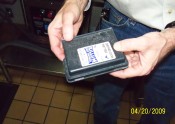
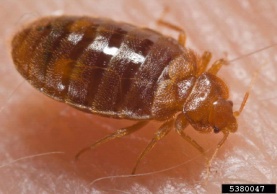


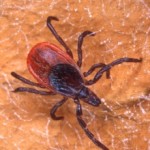
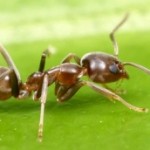
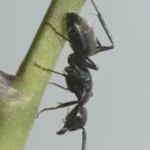





 .
.